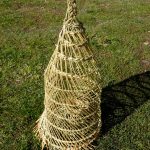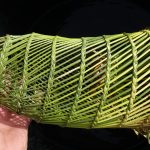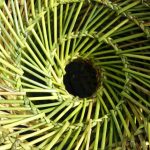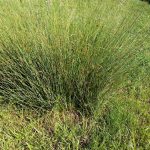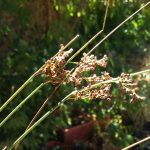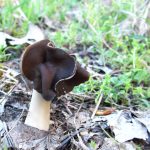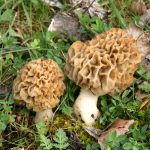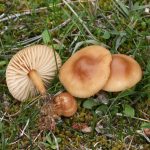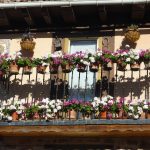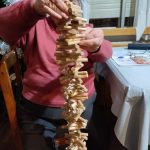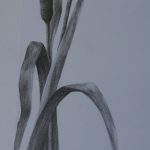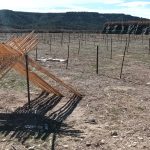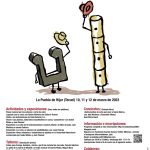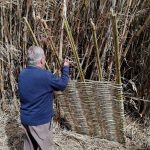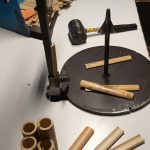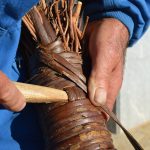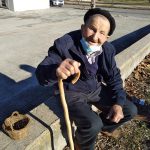Ethno-botany as a basic tool for Human Ecology
Ethno-botany, which is a beautiful name, is a very attractive discipline which tries to understand the relationship between human beings and the vegetable world in its widest sense. It helps us to be able to understand how the human species has managed to form itself and to evolve up to the present, a process in which useful and poisonous plants have been essential. Just stop for a moment to think about the idea that, ultimately, we are what we are due to our knowledge and use of the vegetable kingdom. Ethno-botany is closely involved in the origins and history of humanity, domesticating plants has been the key factor, which has successively changed the course of civilizations.
In reality, Ethno-botany is part of a wider field, such as Ethno-ecology and is therefore a basic tool for Human Ecology. We understand Ethno-ecology as the study of the traditional treatment and management of landscapes and ecosystems.
Ethno-botany is a reflection of our huge capacity to observe and our curiosity, or rather, those of our astute ancestors in the Palaeolithic or the Neolithic Ages, true biologists and ecologists, observers and experimenters in relation to nature purely for survival. Nowadays we enjoy this fundamental inheritance, that relationship between plants and humans which has forged culture.
The first in-depth ethno-botanical research, dating from the 20th century, was carried out with indigenous cultures and their relationship with the environment. The importance of this discipline is as a basic resource and a living science in many underprivileged countries, essential for their day to day life.
But we needn´t go so far back in space and time to study Ethno-botany. Very nearby, in our rural Mediterranean world, we can find it to hand. This is the global idea behind this temporary Exhibition in the Virtual Museum of Human Ecology, where we offer a small sample of photographic reports like brushstrokes or pieces of a puzzle, which we hope will together give the reader and observer an idea of what we want to explain. There is a total of five topics, chosen from those which have recently caught our attention or on which we are currently working.
The five photographic reports, with texts to present them, give way to a gallery of related images.
We, the people who have prepared this Exhibit, come from diverse professional backgrounds, but we are all moved by a passion for plants, botany, the landscape, anthropology and human ecology. We have been brought together on this occasion by Emilio Blanco Castro, an ethno-botanist with over 40 years´ experience in this discipline, and all the authors took up the challenge of taking part.
Acknowledgements
We have to thank and dedicate this work very especially to those who have collaborated and who appear in the pictures for their generosity, for their knowledge and the information provided, and for authorizing and conceding their pictures for this work. Our sincere thanks for all their contributions.
Emilio Blanco, , ethno-botanist, coordinator of the Exhibition; Demetrio Delgado, environmental educationist; Jaime Gila, teacher and naturalist; Miguel Ángel Nava, musician and maker of instruments; and Charo Piñango, landscaper.
Acknowledgements
We have to thank and dedicate this work very especially to those who have collaborated and who appear in the pictures for their generosity, for their knowledge and the information provided, and for authorizing and conceding their pictures for this work. Our sincere thanks for all their contributions.
.
General further reading
TARDÍO, J., PARDO DE SANTAYANA, M., LÁZARO, A., ACEITUNO, L., MOLINA, M. (eds.). 2022. Inventario Español de los Conocimientos Tradicionales relativos a la Biodiversidad Agrícola. Vol. 2. Ministerio de Agricultura, Pesca y Alimentación. Madrid. 455 pp.
TARDÍO, J., PARDO DE SANTAYANA, M., MORALES, R., MOLINA, M., ACEITUNO, L. (eds.). 2018. Inventario Español de los Conocimientos Tradicionales relativos a la Biodiversidad Agrícola. Vol. 1. Ministerio de Agricultura, Pesca y Alimentación. Madrid. 420 pp.
PARDO DE SANTAYANA, M., MORALES, R., TARDÍO, J., ACEITUNO, L. MOLINA, M. (eds.). 2018. Inventario Español de los Conocimientos Tradicionales relativos a la Biodiversidad. Fase II (3). Ministerio para la Transición Ecológica. Madrid. 488 pp.
PARDO DE SANTAYANA, M., MORALES, R., TARDÍO, J., ACEITUNO, L. MOLINA, M. (eds.). 2018. Inventario Español de los Conocimientos Tradicionales relativos a la Biodiversidad. Fase II (2). Ministerio para la Transición Ecológica. Madrid. 425 pp. ISBN:
PARDO DE SANTAYANA, M., MORALES, R., TARDÍO, J. MOLINA, M. (eds.). 2018. Inventario Español de los Conocimientos Tradicionales relativos a la Biodiversidad. Fase II (1). Ministerio para la Transición Ecológica. Madrid. 404 pp.
PARDO DE SANTAYANA, M., MORALES, R., ACEITUNO-MATA, L. MOLINA, M. (eds.). 2014. Inventario Español de los Conocimientos tradicionales relativos a la Biodiversidad. Fase I. Ministerio de Agricultura, Alimentación y Medio Ambiente. Madrid. 411 pp.
Reading connected to the Exhibition
BLANCO, J.E. 2015. Etnobotánica abulense: Las plantas en la cultura tradicional. Ed. Jolube. Jaca. Huesca.
BLANCO, J.E. 2023. La última generación. Intangibles. ICTS Manuel González Herrero. Dip. de Segovia. Segovia.
BLANCO, J.E. C. BERNIS 2022. Reseña etnobotánica de la Maragatería Alta (León). Flora Montiberica83: 105-126.
BLANCO, J.E. y J. DÍEZ 2005. Guía de Flora de Sanabria, Carballeda y Los Valles. Catálogo de etnoflora selecta. Ed. Adisac-La Voz. Zamora.
DELGADO, D. J.E. BLANCO. 2023. La Memoria de las Plantas. Autoeditado. Burgos. (en prensa).









































